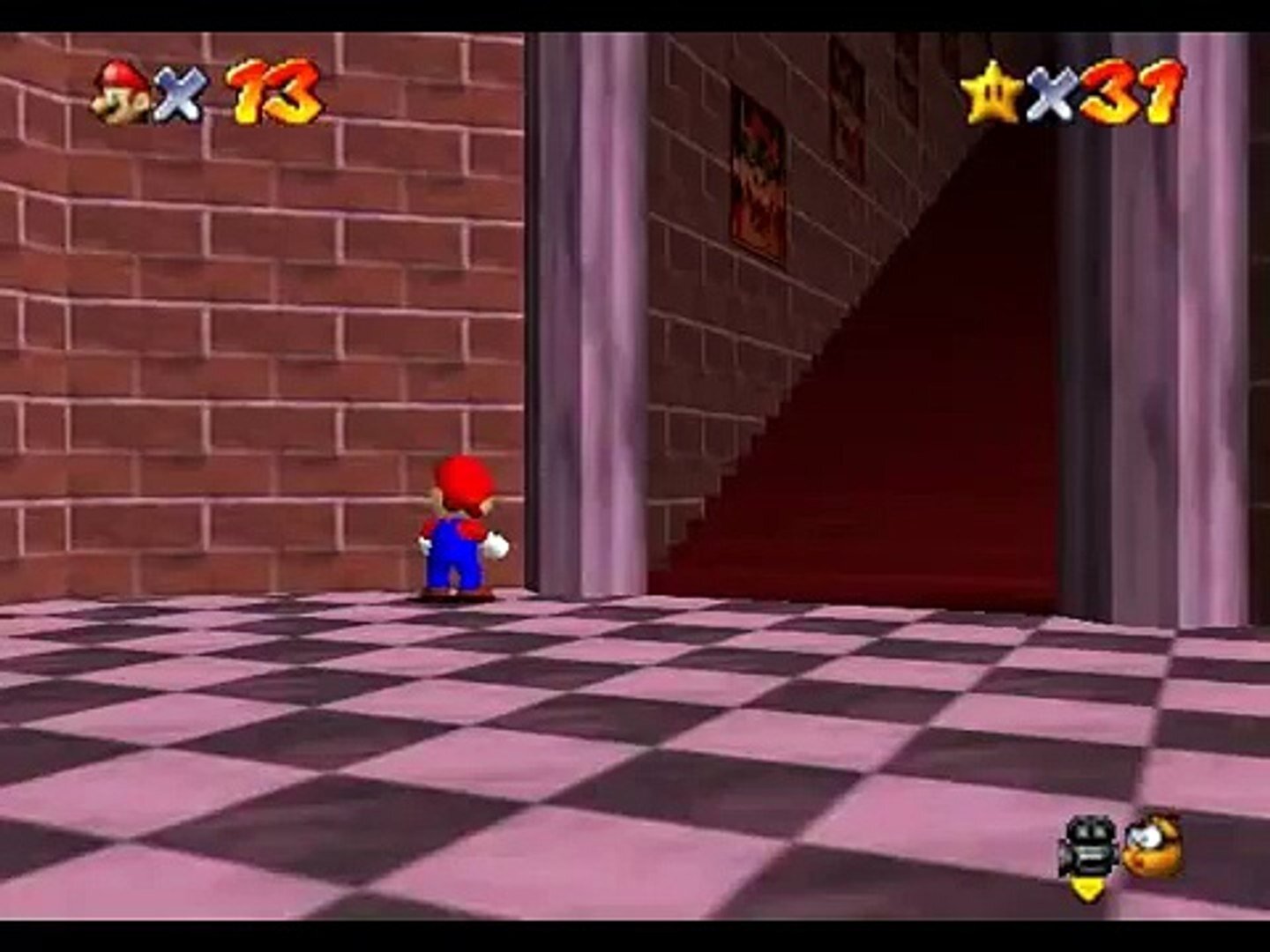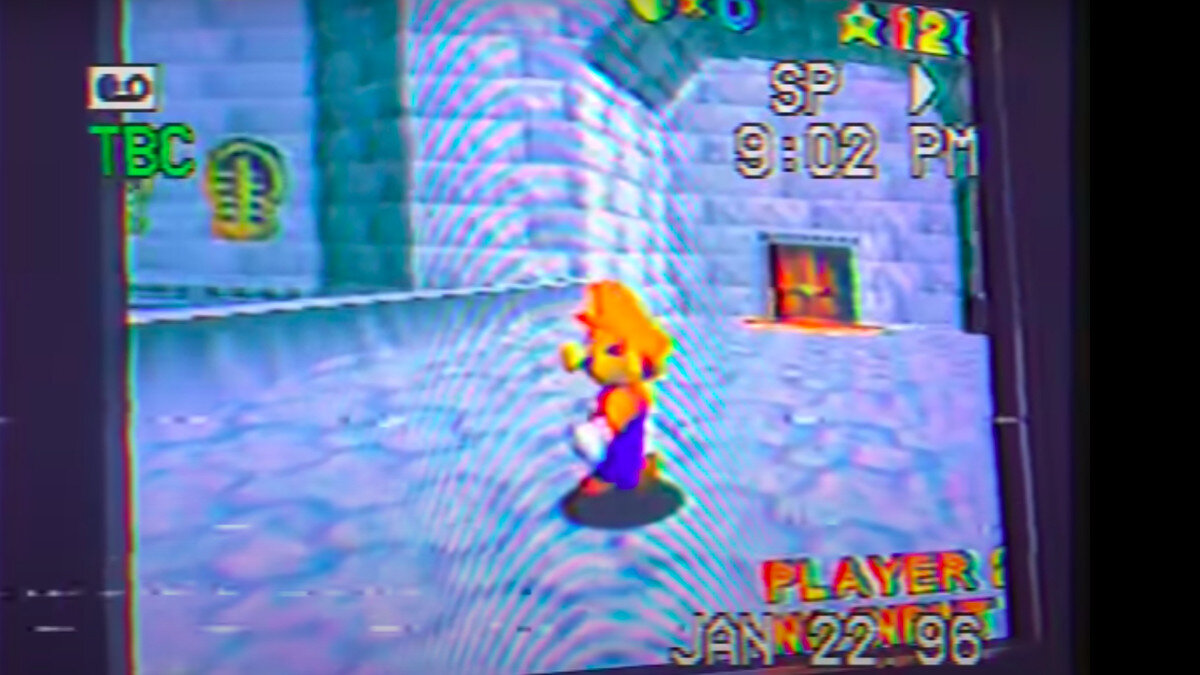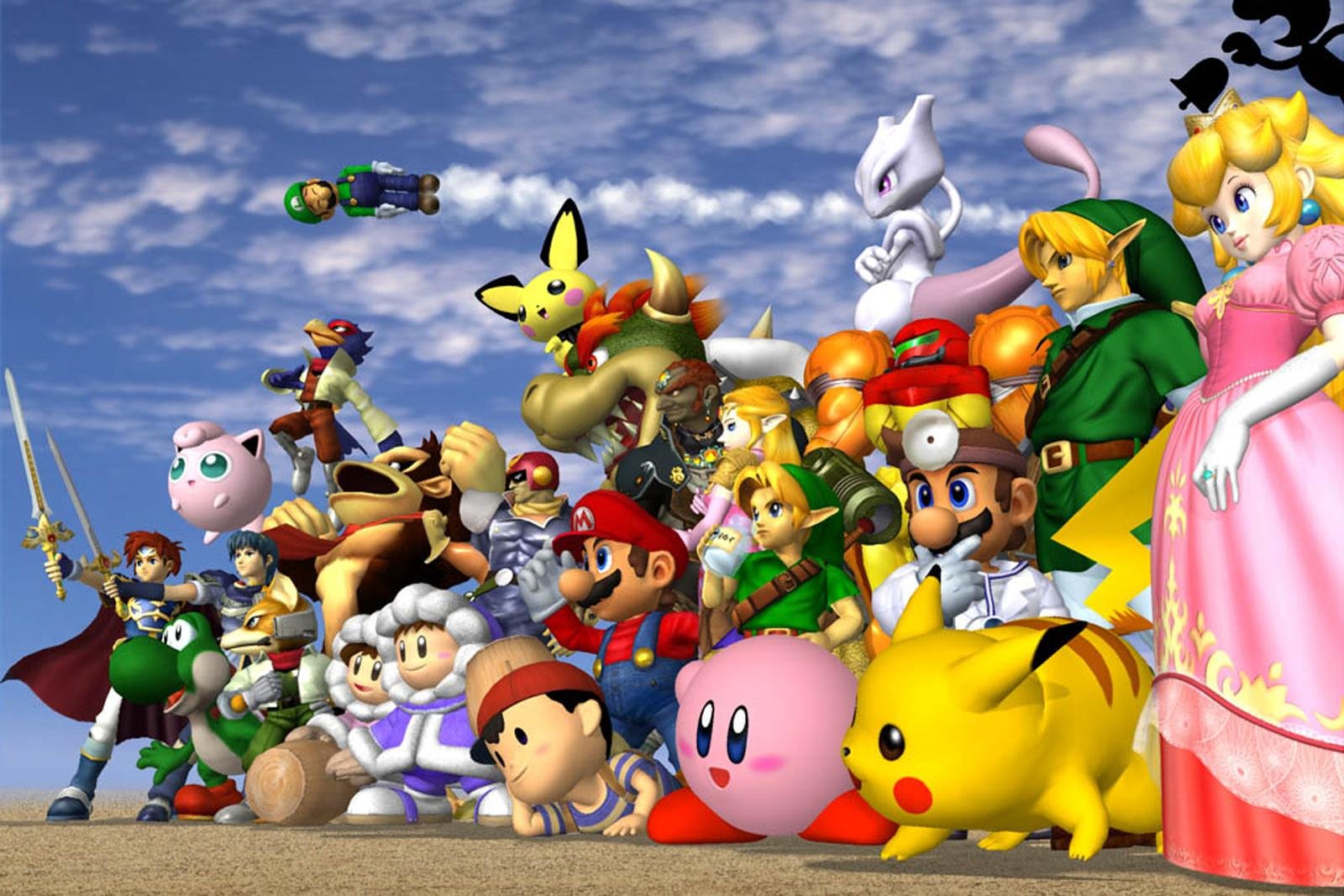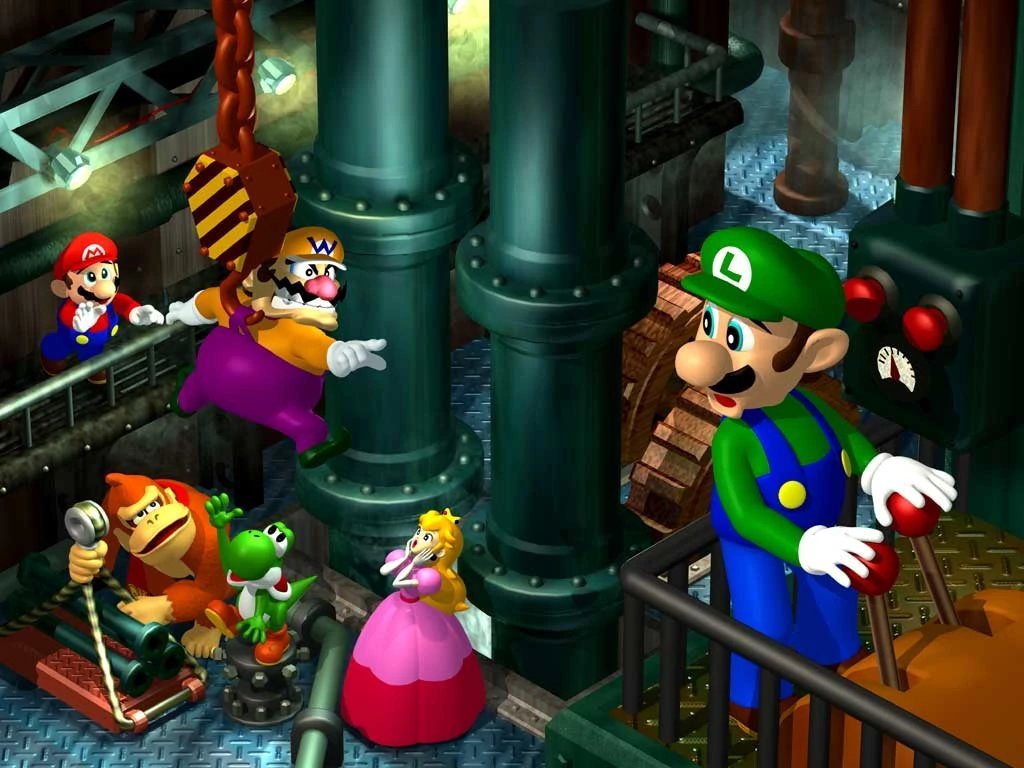MARIO 64 - A STORY OF NOSTALGIA AND ETHEREAL AESTHETICS
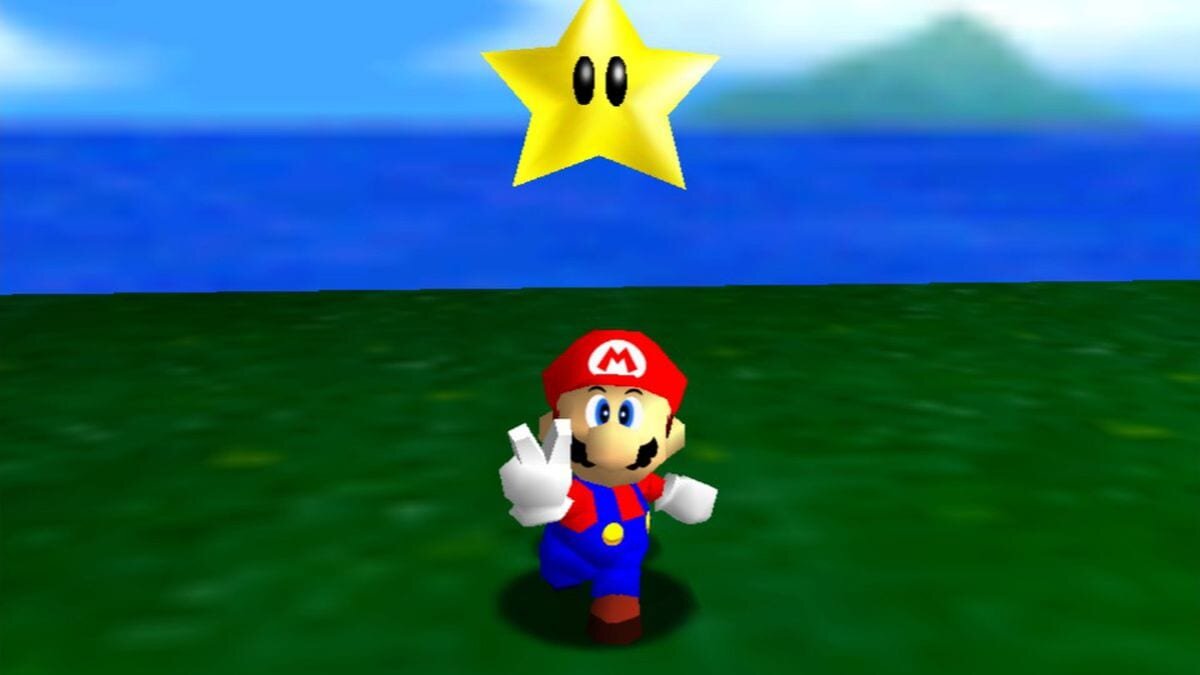
Super Mario 64 was released in 1996. This classic 3D platformer dazzled with its gameplay, which was groundbreaking at the time of its release. Still, today the game is perhaps best remembered for its imaginative game design and its perfect use of nostalgic ambiance and haunting liminality.
This article is part of the on-going series “RAMCPU for sabukaru”. Examining the intersection of art, information and aesthetics, RAMCPU shares his uniquely critical perspective on contemporary art and media to shape the discourse between various discipline and schools of thought.
In Super Mario 64, you play as a small man with a red hat and blue trousers. The story begins when Mario ventures off to The Mushroom Castle to meet Princess Peach for cake. But when Mario arrives, he realizes the Princess has been kidnapped and held captive by a Dragon-Turtle named Bowser.
As Nintendo fans, all will attest: Nothing in the Mario Universe is as it seems. With a world so alien and bizarre from our natural world, it still manages to carefully and simultaneously imposes subtle (yet haunting) themes to give players a sense of a threat and challenge. These threatening auras emit not from the enemy hostiles that you encounter, but from the spaces in which you encounter them.
Nintendo games may appear lighthearted on the surface. But beneath that exterior, within the corridors of Princess Castle, you discover that Mario 64 touches on very basic fears and emotions.
Take, for example, the plot-line of Mario 64. Mario wants to see Princess Peach but has to get the Power Stars to free her from Bowser's clutches; It's all pretty straightforward. But the entire game, while reinventing and pioneering 3D technology, is also totally submerged in ambient aesthetics and ethereal elements that give the game a very sinister backdrop. These storytelling themes help make Mario 64 profoundly memorable (despite the infamous in-game camera, which makes the game unnecessarily difficult at times).
For example, the first shot of the game's opening cinematic reveals a profile image of Princess Peach. Brought to the forefront of the image is a handwritten letter to Mario. This scene appears to be some memory or dream sequence-- Her head appears as if it's in the clouds, and then, she fades off into the distance. This simple scene presents the cloudy dreamscape theme; the story takes place in a distant land, on the outskirts of reality...
Upon approaching the Princess's castle, you're greeted by Lakitu, a turtle flying on a cloud, who explains that he will be following you around, filming you on your journey (thus explaining the game's 3rd person camera view).
You're actually playing through the camera lens of Lakitu, as part of some live broadcast, reinforcing the slightly haunting notion that unknown entities are watching you beyond the lens.
The castle is empty, and the sound reverberates off the interior walls. The castle is surrounded by water, and inside there are paintings that Mario must jump into, each image leading to an alternate reality. When the player jumps into the pictures, each one responds with a water-like effect; the paintings themselves behave like pools of water when touched.
The metaphors provide the game with a nostalgic sense of depth. Players must navigate through an abandoned castle and explore endless staircases and total vacancy while being watched.
Mario 64 is indeed a piece of art. The game's music and castle design remind us of the dated interior of The Shining's Overlook Hotel.
In the 1980 film The Shining, director Stanley Kubrick strategically confused the players with the design of The Overlook hotel — he specifically used isolation and set design to distort the viewers' sense of space.
This confusion distorts the viewer's perception and adds to the game's mystique by heightening the lack of perceptual awareness. These confusing rooms, spaces, and hidden easter eggs within the castle are similar to the feelings conjured by the Overlook Hotel in The Shining.
For the first time in Super Mario's history, the castle itself was a starring character, brought to life by the power of imagination and the unknown.
Super Mario 64's castle was indeed a digital liminal space before the internet. The castle was quite literally a threshold to new worlds.
It's proof that you can convey a lot of emotion and suspense, not through plot alone, but by space and silence. Not knowing what lies beyond the next door is enough to inflict feelings of nostalgia as players go back to revisit those same doors they did years ago.
And as Mario ventures into various rooms within the castle, door after door, loneliness and isolation are never really stamped out. Perhaps the hero's journey is indeed one of loneliness.
Songs by composer Koji Kondo on the game's original soundtrack feature ballads like "Inside the Castle Walls" and the famous "Dire, Dire, Docks" (the underwater theme); both songs, for example, feature charmingly spacious tones.
Pair these melodies with lush pads and swells from the orchestra, and you have an emotional theme that pulls on the heartstrings of players nearly 30 years later.
Mario 64 was a tour de force for gaming technology. But it also made us experience feelings that we had never encountered before. Mario 64 is, in many ways, a derivative of the classic art style that uses spaces and simple colors to convey simple but profoundly complex human emotions.
It tells its story less through plot-lines and words but through environments, music, endless stairways, and fading silhouettes.
Mario 64 is a source for digital art movements like Vaporwave and the fascination with abandoned architecture. Today, the game is a point of interest within liminal and nostalgic communities in the 21st century.
About the author:
RAMCPU is a writer, philosopher, and creator of the media theory known as Arcadism. RAM writes about media, art, arcades. and internet subcultures.
His weekly newsletter is entitled "Arcade Press".

